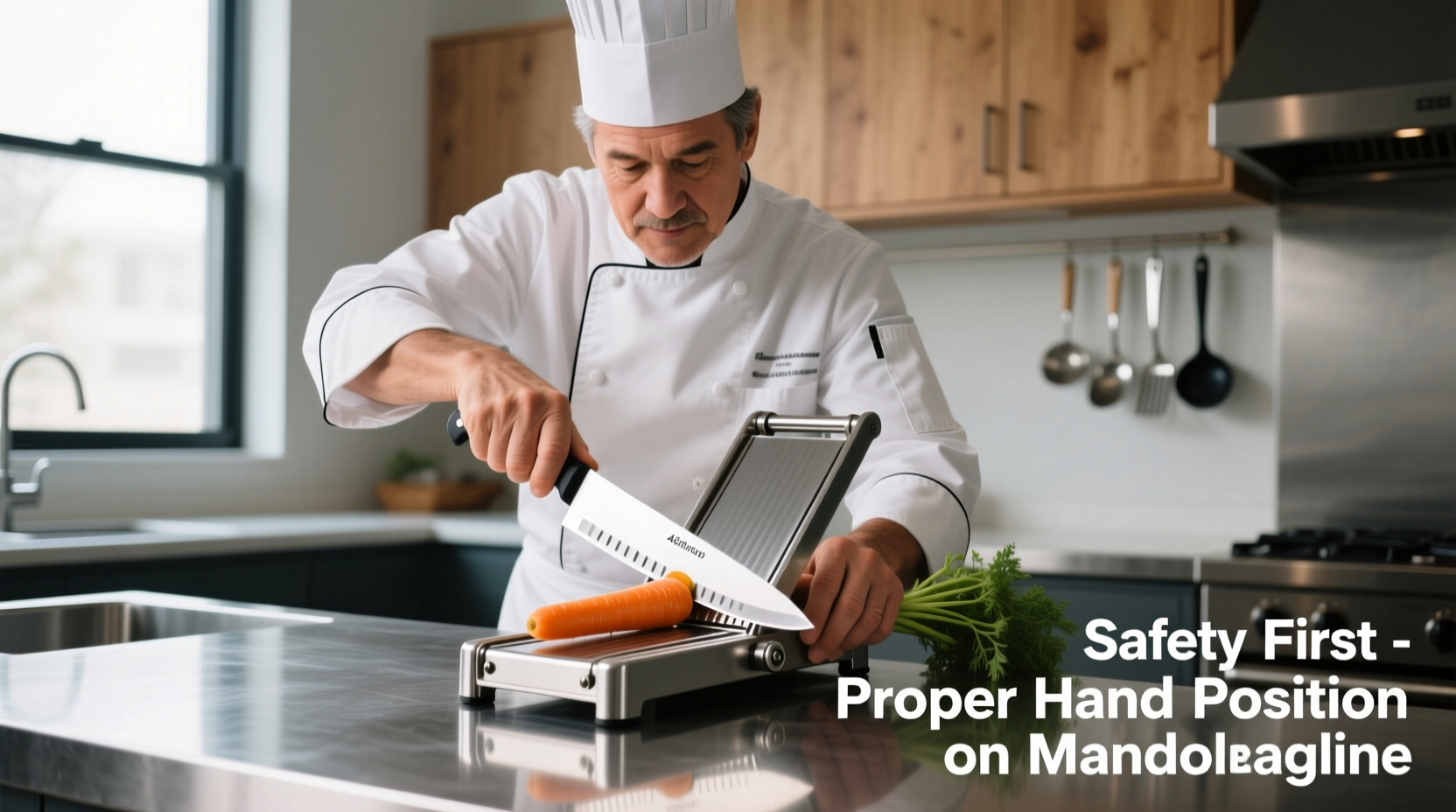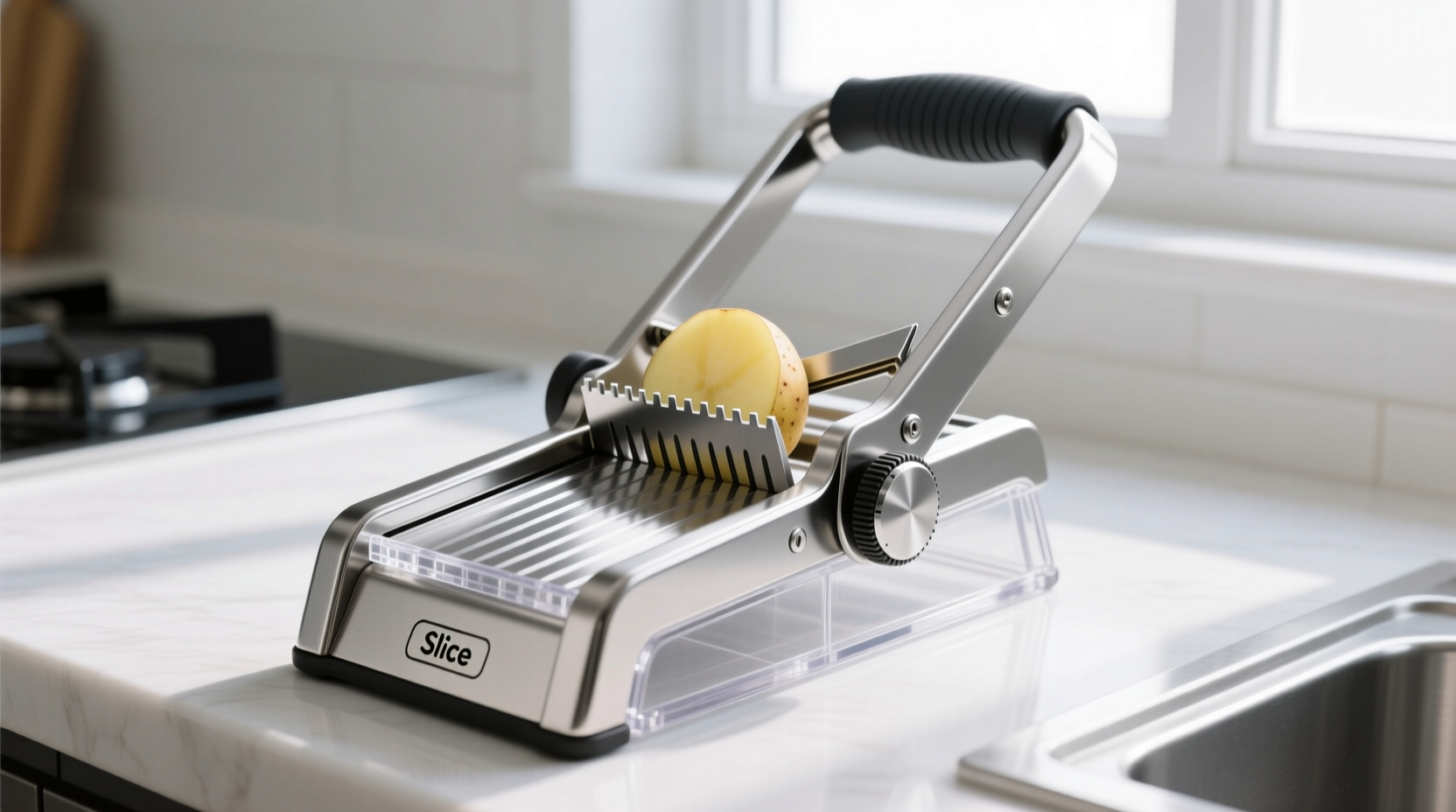Professional chefs and home cooks alike rely on mandoline slicers for consistent vegetable preparation, but improper use causes thousands of kitchen injuries annually. Understanding proper technique transforms this potentially dangerous tool into an indispensable kitchen asset that elevates your cooking efficiency and presentation.
The Evolution of Precision Slicing: From French Kitchens to Modern Countertops
Mandoline slicers originated in 18th century France, where professional chefs needed consistent vegetable cuts for elaborate presentations. Early models were simple wooden platforms with fixed blades. The 1950s introduced adjustable metal models, while modern iterations incorporate multiple cutting surfaces and enhanced safety features. According to culinary historians at the Culinary Institute of America, the mandoline's fundamental design has remained remarkably consistent despite material advancements from wood to stainless steel and plastic composites.
Critical Safety Protocols Every User Must Follow
Consumer Product Safety Commission data shows mandoline slicers account for approximately 15% of all reported kitchen cutting tool injuries. The most common injury occurs when the hand pushing food slips toward the blade. Follow these non-negotiable safety practices:
- Always use the food holder or guard—never your bare hand
- Maintain three-point contact with the food holder (thumb and two fingers)
- Work in a well-lit area with stable countertop surface
- Store with blade guard in place when not in use
- Never attempt to catch falling food near the blade
Professional kitchen safety trainers emphasize that most mandoline injuries happen during the final slices when users become complacent. The National Restaurant Association's kitchen safety guidelines recommend treating mandoline blades with the same respect as professional chef's knives.

Mastering Potato Slicing Techniques
For perfect potato slices every time, follow this professional workflow:
- Wash and dry potatoes thoroughly (moisture causes slipping)
- Select appropriate blade setting (1/8" for scalloped potatoes, 1/4" for gratins)
- Secure mandoline on non-slip surface or damp towel
- Hold potato firmly in food holder with three-point grip
- Apply even downward pressure while moving food across blade
- Rotate potato 90 degrees between passes for uniform thickness
- Stop when 1/2" of potato remains to avoid hand contact
When slicing potatoes for dishes like gratins or scalloped potatoes, consistent thickness ensures even cooking. Inconsistent slices lead to some pieces becoming mushy while others remain undercooked. Professional chefs testing various mandoline models found that stainless steel models maintain blade sharpness 40% longer than plastic alternatives according to Cook's Illustrated testing data.
Selecting Your Ideal Mandoline Slicer
Not all mandoline slicers suit every kitchen. Consider these factors when choosing:
| Type | Best For | Limitations | Safety Features |
|---|---|---|---|
| Traditional French Mandoline | Professional kitchens, frequent use | Bulky, requires significant storage space | Adjustable hand guard, blade lock |
| Foldable Mandoline | Home kitchens with limited space | Less stable, limited blade options | Retractable blade, compact storage |
| Box Grater Style | Occasional use, small quantities | Inconsistent cuts, limited thickness options | Food pusher included, no exposed blades |
| Electric Mandoline | Large quantities, commercial use | Expensive, requires electrical outlet | Automatic feed, emergency stop button |
For home cooks preparing potatoes regularly, a mid-range stainless steel mandoline with multiple blade options offers the best balance of safety and versatility. Professional chefs at America's Test Kitchen recommend models with blade tension adjustment screws, which maintain consistent cutting performance as blades wear.
Maintenance for Long-Term Performance
Proper care extends your mandoline's life and maintains cutting precision:
- Hand wash only—dishwashers damage blade alignment
- Dry thoroughly before storage to prevent rust
- Apply food-grade mineral oil to metal components monthly
- Replace blades when cuts become uneven (typically after 1-2 years of regular use)
- Store with protective cover over blades
Blade replacement frequency depends on usage. Home cooks using their mandoline weekly should expect to replace blades annually, while professional kitchens may need replacements quarterly. The Culinary Institute of America's equipment maintenance guidelines note that attempting to sharpen mandoline blades often creates more problems than it solves due to precise angle requirements.
When to Choose Alternatives
Mandoline slicers aren't appropriate for all situations. Consider these limitations:
- Very small vegetables: Items smaller than 2" become difficult to handle safely
- Irregularly shaped produce: Potatoes with deep eyes or bumps create inconsistent cuts
- Soft vegetables: Tomatoes and overripe potatoes may crush rather than slice cleanly
- Specialty cuts: Some intricate designs require specialized equipment
For small-batch potato preparation, a sharp chef's knife provides adequate control with proper technique. When slicing large quantities of uniform potatoes for dishes like potato salad or french fries, however, the mandoline's speed and consistency make it indispensable. The American Culinary Federation's technique guidelines note that professional kitchens typically use mandolines for batch preparation and knives for finishing touches.
Frequently Asked Questions
Can I use a mandoline slicer for frozen potatoes?
No, never use frozen potatoes with a mandoline slicer. The extreme hardness can damage blades and create dangerous kickback. Always fully thaw potatoes and bring them to room temperature for safe, consistent slicing.
How do I prevent potatoes from sticking to the mandoline blade?
Lightly oil the blade with food-grade mineral oil before use. For waxy potatoes, work quickly as they begin to oxidize. Alternatively, slice potatoes directly into acidulated water (1 tablespoon lemon juice per quart of water) to prevent sticking and browning.
What's the safest way to clean a mandoline slicer?
Always disassemble the mandoline and clean components separately. Hold blades sideways (never toward your hand) while washing. Use a dedicated brush for blade cleaning—never your fingers. The National Sanitation Foundation recommends cleaning blades with the back of a sponge rather than the abrasive side to maintain sharpness.
Are there specific potato varieties that work best with mandoline slicers?
Russet and Yukon Gold potatoes provide the most consistent results due to their firm texture and uniform shape. Avoid highly irregular or soft varieties like fingerling potatoes, which create inconsistent cuts and increase safety risks. For gratins, Yukon Gold's buttery texture slices beautifully at 1/8" thickness.











 浙公网安备
33010002000092号
浙公网安备
33010002000092号 浙B2-20120091-4
浙B2-20120091-4